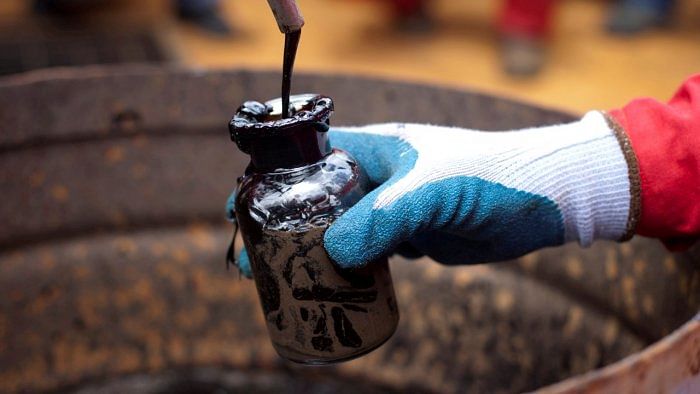
By Julian Lee,
European Union sanctions on Russian oil are inching closer, with Germany, the bloc’s biggest economy, saying that it won’t oppose an embargo. But what is actually considered “Russian oil”?
Putting restrictions on Russian crude is one thing. Trying to stop the sale of Russian refined products is much more complicated, in part because it’s not clear what can, or should be, included.
For crude, it is (relatively) straightforward. Sanctions should be applied to crude pumped out of oil fields in Russia, from which the government derives revenue in the form of export duties and mineral extraction tax.
The one area of uncertainty is CPC Blend crude, which is shipped from a terminal on Russia’s Black Sea coast — close to, but entirely separate from, the country’s main export port in the region at Novorossiysk. The blend contains some molecules of Russian origin, and purchasers have been named and shamed by organizations tracking shipments of “Russian” crude.
But the situation isn’t that simple. At the export terminal, CPC Blend comprises approximately 90% crude from Kazakhstan and 10% that comes from fields in the Russian sector of the Caspian Sea, which are operated by the Russian oil company Lukoil PJSC.
While it might be technically feasible for the Russian molecules to be separated prior to export, as the US Treasury initially suggested in its guidance on Russian oil sanctions, this isn’t going to happen. The Russian operators of the export terminal aren’t going to segregate molecules from Russian oil fields just to make it easier for buyers to avoid them. That would appear to make it a candidate for sanctions.
But the CPC pipeline carries about 80% of Kazakhstan’s crude exports, and there are no realistic alternatives for more than a small fraction of that volume. So the choice is clear: Ban CPC exports and cripple the economy of Kazakhstan, while inflicting little pain on Russia. Or, accept that Moscow will continue to export a small amount of crude via the CPC system.
The US Treasury updated its guidance in mid-March, noting that CPC crude “is marketed and loaded with a certificate of origin verifying that the crude is of Kazakh origin” and that “US persons may reasonably rely upon a certificate of origin.”
So Russian crude will continue to leak onto the market, just as supplies do now from Iran and Venezuela, with some countries willing to keep buying despite sanctions. Steps could be taken to limit and gradually reduce those flows over time, by granting waivers to buyers who demonstrate that they are reducing their purchases of Russian crude. This was done with considerable success during the Obama-era sanctions on Iranian oil. Yes, there will be some smuggling and blending of Russian crude with other grades in shady ship-to-ship transfers, but no system is going to be perfect.
Refined products are even more complicated.
Fuels produced in Russian refineries are an easy target. The US ban on imports is already hitting Russian refineries that have few other outlets for selling fuel oil and vacuum gasoil and no way to avoid making them. The build-up of unsold product has forced them to cut throughput as they run out of storage space.
But what about, for example, diesel fuel produced in an Indian refinery that has started to import Russian crude alongside deliveries from traditional suppliers in the Middle East? How should those refined products be classified? Moscow won’t see tax receipts from the diesel sales — it has already collected them from the original crude cargo. But if such sales are permitted, there’s no economic incentive for Indian refiners to stop buying Russian crude. And their purchases have soared since Moscow’s invasion of Ukraine.
The cost of shipping crude from western Russia to India and China is much greater than making deliveries to Europe, necessitating steep discounts to offset higher shipping costs and many more vessels, with voyages to Asia taking at least four times as long as trips to Europe.
Oil market dynamics, where diesel fuel is already in short supply and prices have risen to record highs, may make it very difficult to sanction products refined from Russian crude outside of Russia. Maybe that’s just something we have to live with, as the screws are tightened on Russia’s crude flows. Sanctions aren’t a failure even if they only reduce, rather than halt, Russia’s oil exports.